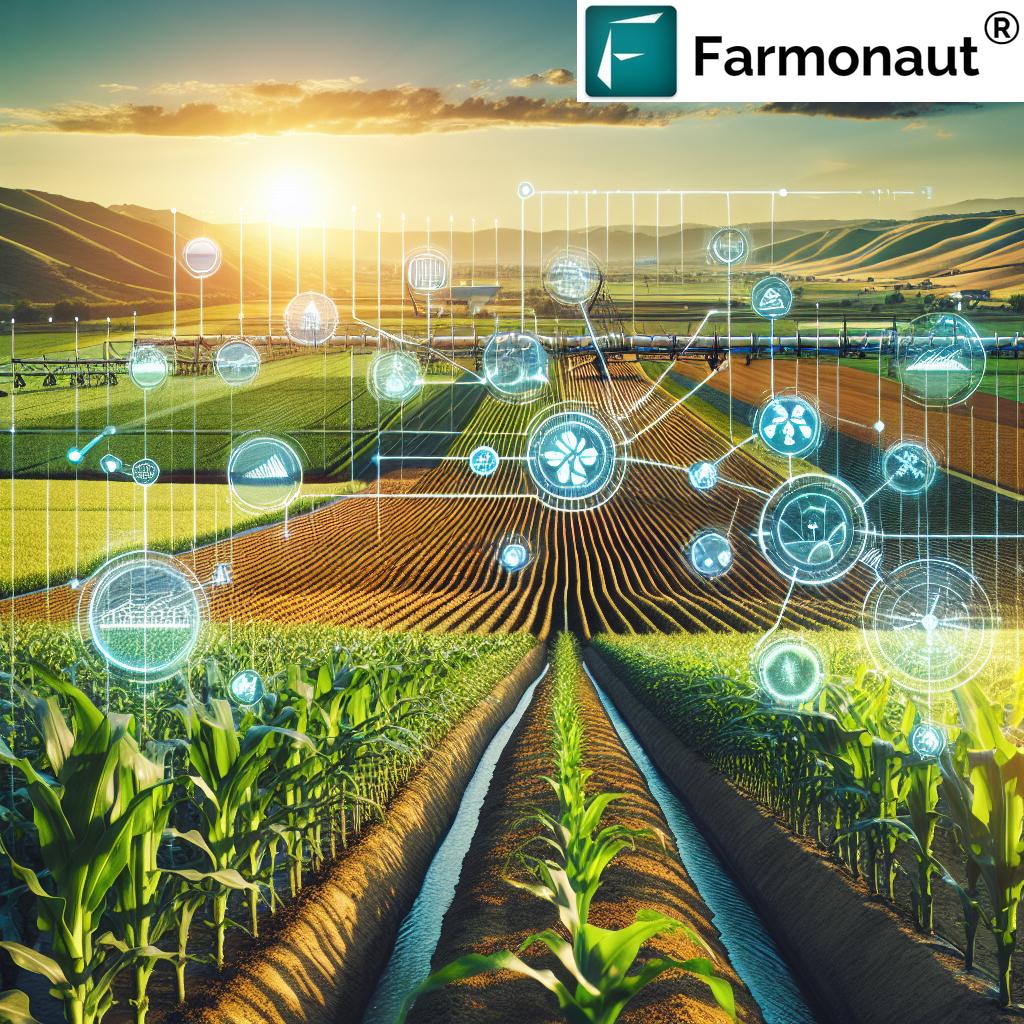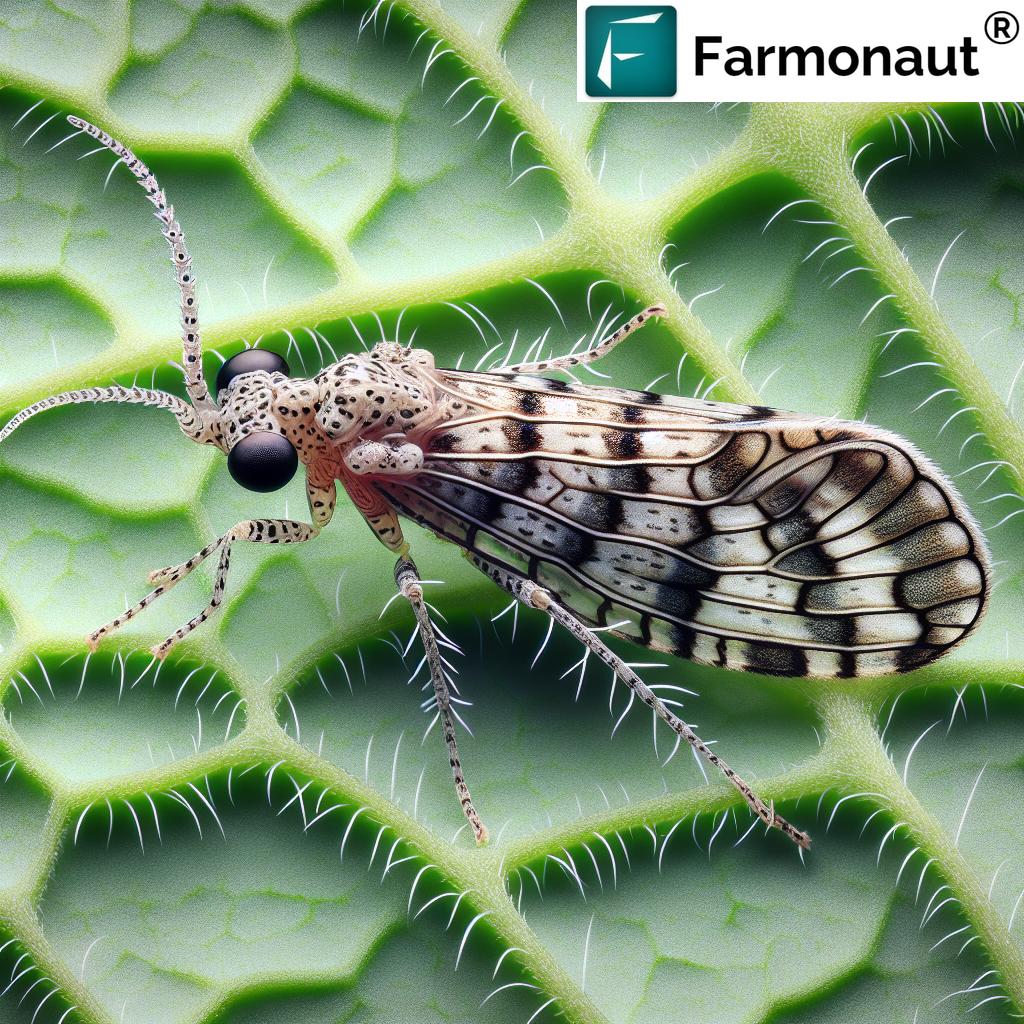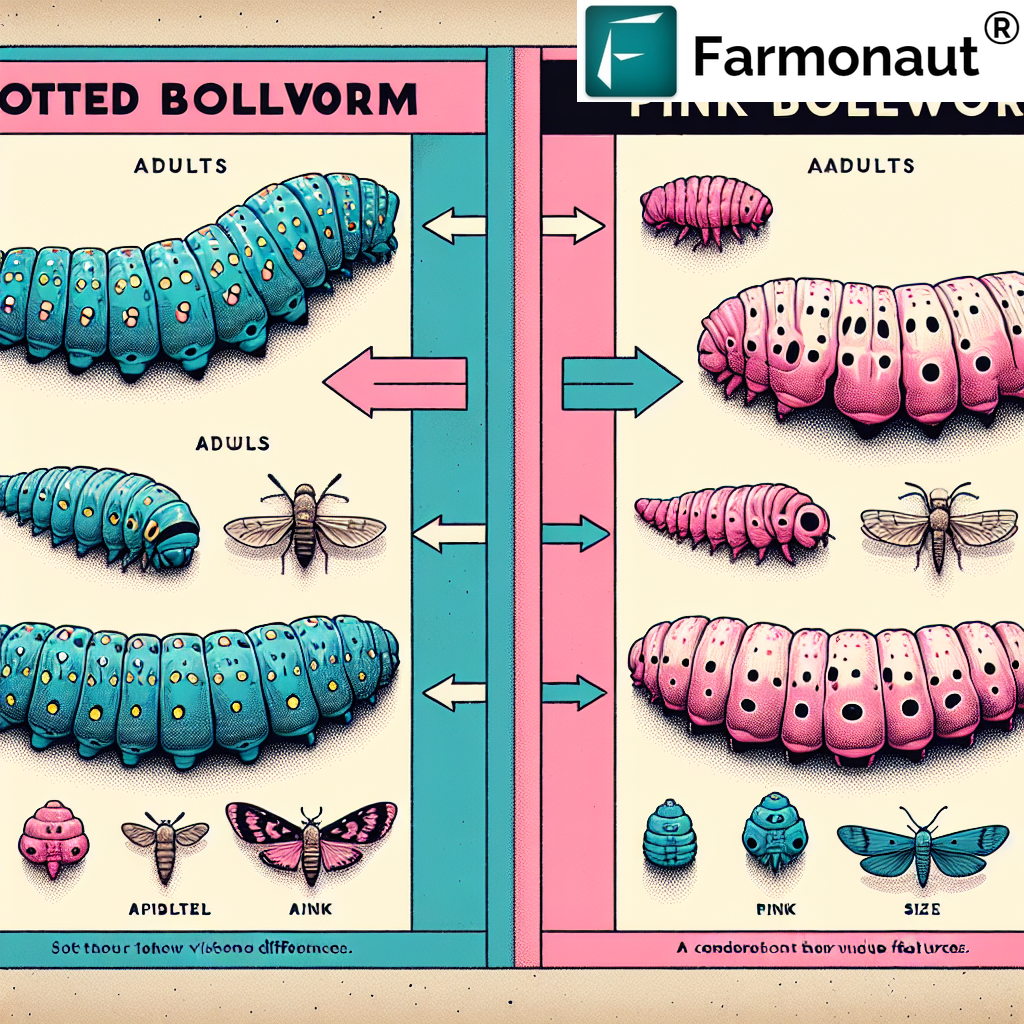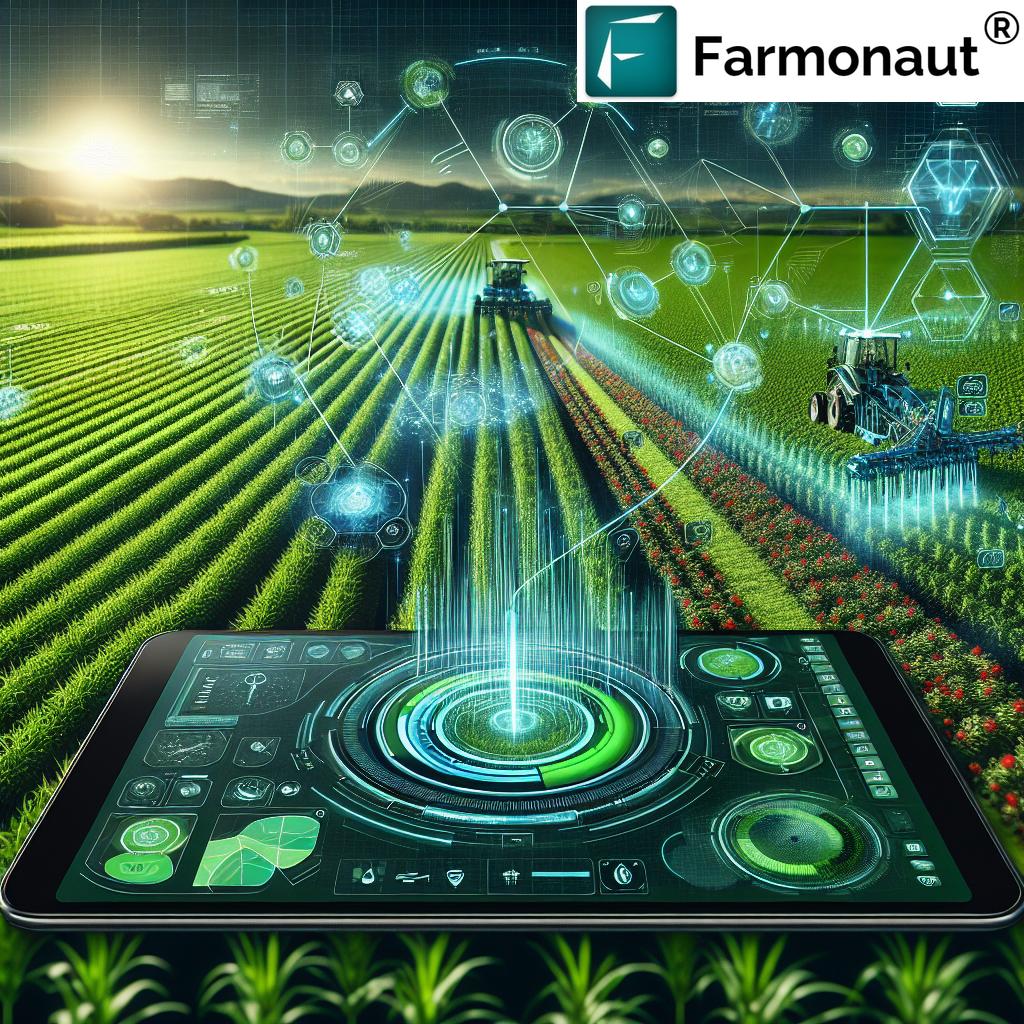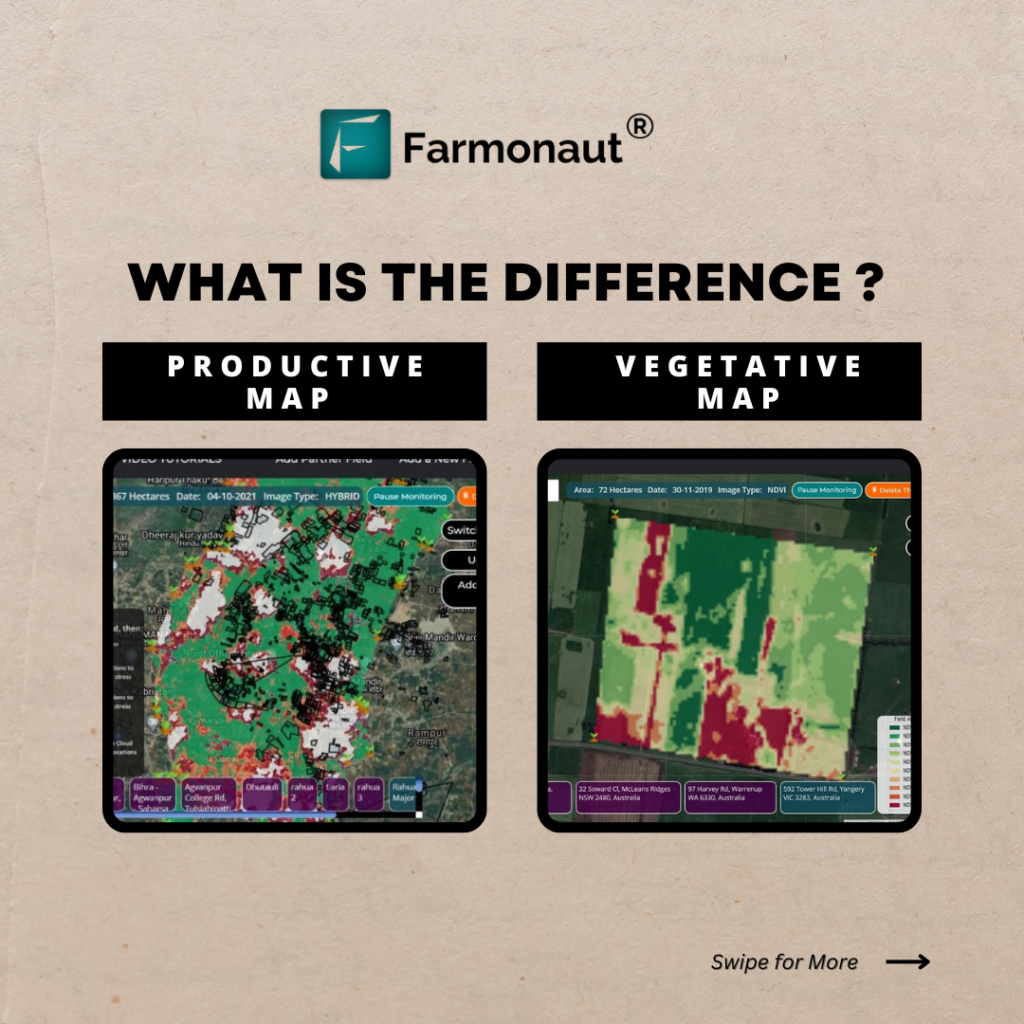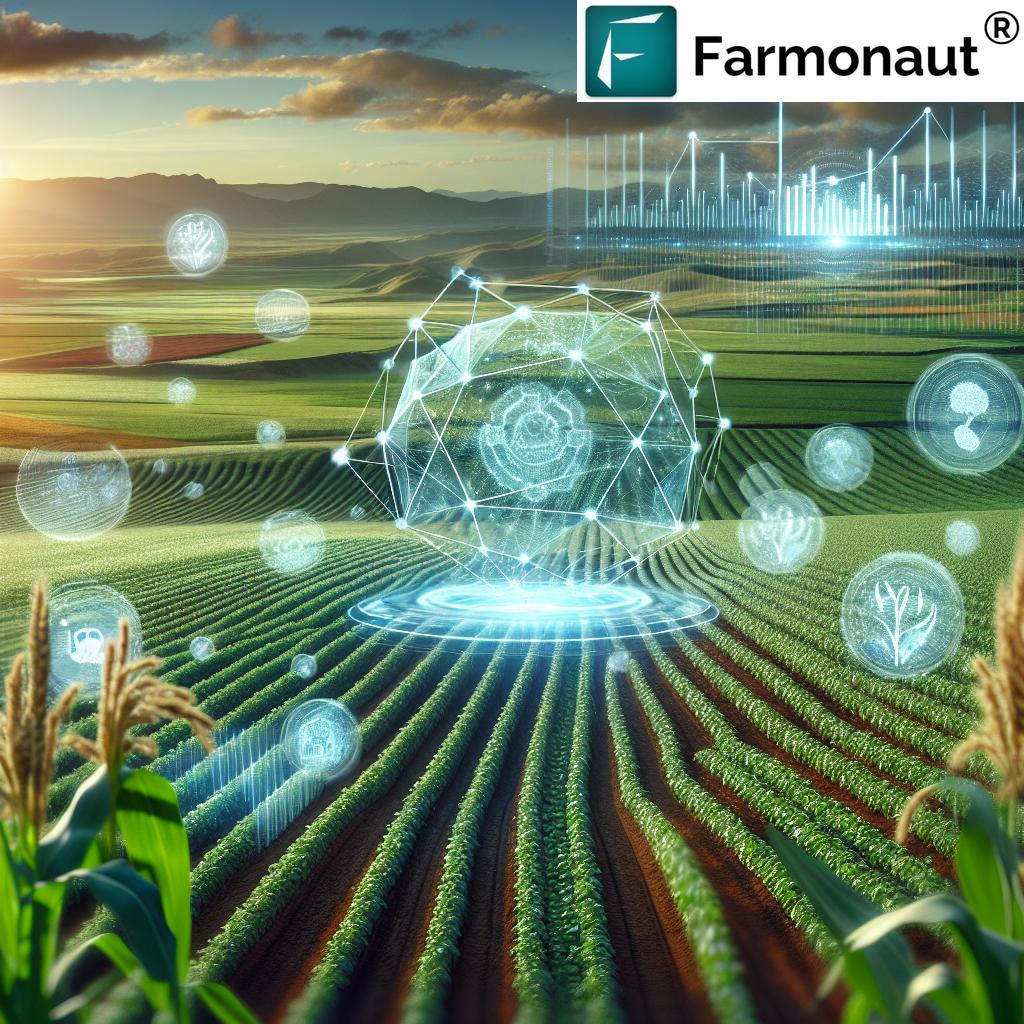Understanding the Difference Between Jassid and Leafhopper: A Comprehensive Guide to Crop Pest Management
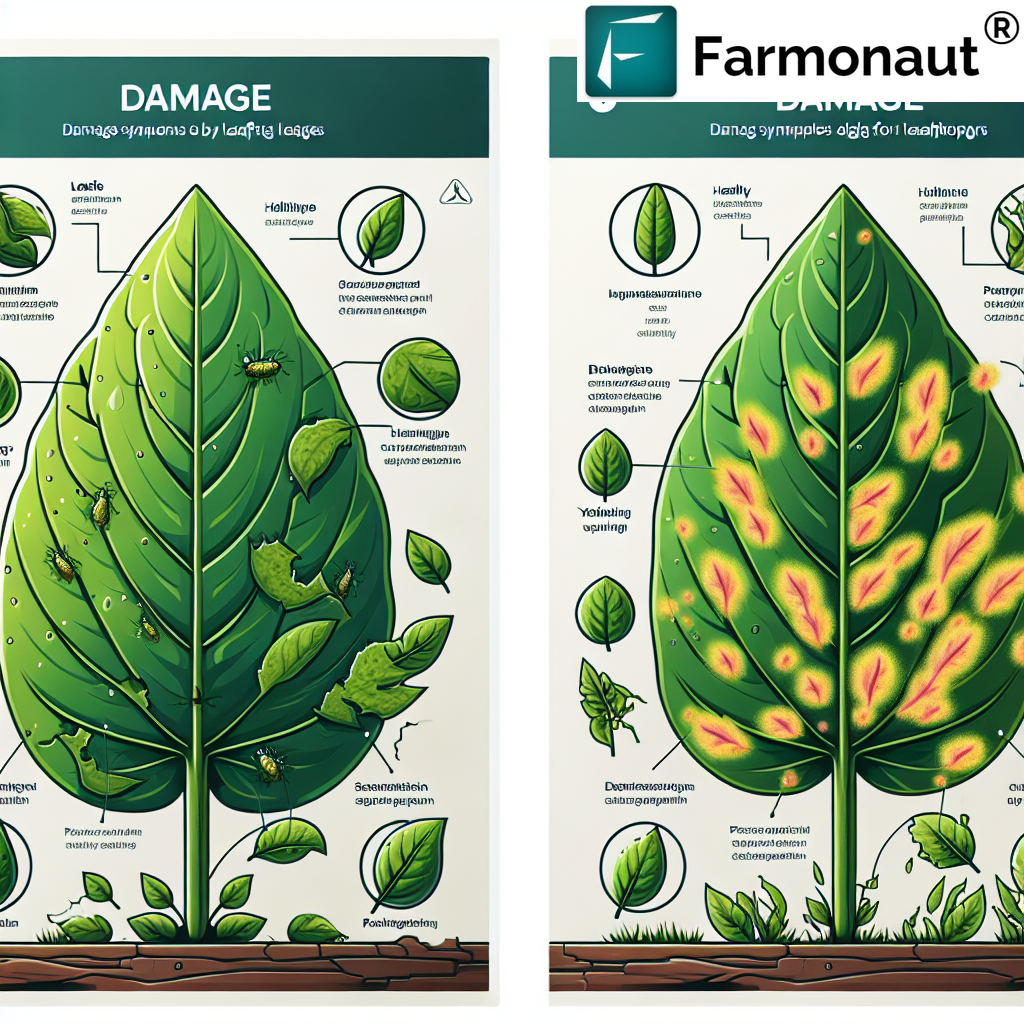
In the ever-evolving world of agriculture, understanding and managing crop pests is crucial for maintaining healthy yields and ensuring food security. At Farmonaut, we are committed to providing farmers with the most advanced tools and knowledge to combat these challenges. In this comprehensive guide, we’ll delve into the intricate world of two common crop pests: jassids and leafhoppers. We’ll explore the difference between jassid and leafhopper, their impact on crops, and how our cutting-edge satellite technology can help in early detection and management of these pests.
Understanding Jassids and Leafhoppers: An Overview
Before we dive into the specifics, it’s essential to understand that both jassids and leafhoppers belong to the order Hemiptera, which includes various sap-sucking insects. While they share some similarities, there are crucial differences that farmers and agronomists need to be aware of for effective pest management.
Jassids: The Green Menace
Jassids, also known as cotton leafhoppers or cotton jassids, are small, wedge-shaped insects that primarily affect cotton crops but can also damage other plants. These pests are typically green in color and measure about 2-3 mm in length. Jassids are known for their ability to cause significant damage to crops by sucking sap from the undersides of leaves.
Leafhoppers: A Diverse Group of Pests
Leafhoppers, on the other hand, represent a more diverse group of insects. While all jassids are considered leafhoppers, not all leafhoppers are jassids. Leafhoppers can vary in size and color, ranging from 3-15 mm in length and displaying various hues including green, brown, and even brightly colored patterns. They affect a wider range of crops compared to jassids, including fruits, vegetables, and ornamental plants.
The Crucial Difference Between Jassid and Leafhopper
Understanding the difference between jassid and leafhopper is vital for implementing targeted pest control strategies. Here are the key distinctions:
- Specificity: Jassids are more specific in their host preference, primarily attacking cotton and related plants. Leafhoppers, as a broader group, have a wider host range.
- Size: Jassids are generally smaller, typically 2-3 mm, while leafhoppers can range from 3-15 mm depending on the species.
- Appearance: Jassids are usually green, while leafhoppers can exhibit a variety of colors and patterns.
- Damage Pattern: Jassids often cause a characteristic “hopper burn” on leaves, while leafhopper damage can vary depending on the species and host plant.
- Movement: Jassids tend to move sideways when disturbed, while many leafhoppers jump or fly away quickly.
Leafhopper Jassid: Clearing the Confusion
The term leafhopper jassid is often used interchangeably, which can lead to confusion. To clarify:
- All jassids are leafhoppers, but not all leafhoppers are jassids.
- The term “leafhopper jassid” is sometimes used to specifically refer to cotton jassids (Amrasca biguttula biguttula).
- In scientific classification, jassids belong to the subfamily Cicadellinae within the larger leafhopper family Cicadellidae.
This overlap in terminology highlights the importance of precise identification for effective pest management strategies.
Recognizing Leafhopper Symptoms: Early Detection is Key

Identifying leafhopper symptoms early can make a significant difference in crop protection. Here are some common signs to watch for:
- Leaf Discoloration: Yellowing or browning of leaves, often starting from the edges.
- Stunted Growth: Plants may show reduced growth or vigor due to sap loss.
- Curling or Cupping: Leaves may curl upwards or downwards, depending on the species.
- Hopper Burn: A characteristic V-shaped yellowing at leaf tips, particularly common with jassids.
- Honeydew: A sticky substance secreted by leafhoppers, which can lead to sooty mold growth.
- Stippling: Tiny white or yellow spots on leaves where feeding has occurred.
- Wilting: Severe infestations can cause entire plants to wilt and die.
It’s important to note that these symptoms can sometimes be mistaken for other issues such as nutrient deficiencies or water stress. This is where advanced technology, like Farmonaut’s satellite-based crop monitoring, can provide crucial insights.
How Farmonaut’s Satellite Technology Revolutionizes Pest Detection
At Farmonaut, we leverage cutting-edge satellite technology to help farmers detect and manage pest infestations, including jassids and leafhoppers, more effectively. Here’s how our system stands out:
| Feature | Farmonaut Satellite System | Drone-based Monitoring | IoT-based Monitoring |
|---|---|---|---|
| Coverage Area | Vast (Global) | Limited (Local) | Very Limited (Point-based) |
| Frequency of Data | Daily to Weekly | On-demand (labor-intensive) | Continuous but localized |
| Cost-effectiveness | High | Medium | Low (High initial investment) |
| Ease of Use | Very High (No on-field equipment) | Medium (Requires piloting skills) | Medium (Requires maintenance) |
| Data Analysis | Advanced AI and Machine Learning | Varies (Often manual interpretation) | Automated but limited in scope |
Our satellite-based system offers several advantages in detecting and managing jassid and leafhopper infestations:
- Early Detection: Our advanced algorithms can detect subtle changes in crop health indicative of pest infestations before they become visible to the naked eye.
- Wide Coverage: Unlike drones or ground-based sensors, our satellites can monitor vast areas of farmland simultaneously, providing a comprehensive view of pest spread.
- Regular Monitoring: With frequent satellite passes, we offer consistent monitoring, allowing farmers to track the progression of infestations and the effectiveness of treatment measures.
- Data Integration: Our system integrates satellite data with weather information and historical pest patterns, providing a holistic approach to pest management.
- Cost-Effective: By eliminating the need for expensive on-ground equipment or manual surveys, we make advanced pest monitoring accessible to farmers of all scales.
To experience the power of our satellite-based crop monitoring system, visit our app redirect page or download our mobile app for Android or iOS.
Integrated Pest Management: Combining Technology with Traditional Methods
While our satellite technology provides invaluable insights, effective pest management requires an integrated approach. Here’s how farmers can combine our technology with traditional methods to combat jassids and leafhoppers:
- Regular Monitoring: Use Farmonaut’s satellite data to identify potential hotspots, then conduct targeted field inspections to confirm pest presence.
- Biological Control: Encourage natural predators like ladybugs, lacewings, and parasitic wasps, which can help control jassid and leafhopper populations.
- Cultural Practices: Implement crop rotation, adjust planting dates, and maintain field hygiene to disrupt pest life cycles.
- Resistant Varieties: Choose crop varieties that have shown resistance to jassids and leafhoppers when available.
- Targeted Pesticide Use: When necessary, use pesticides judiciously based on the specific pest identified and the extent of infestation as indicated by our satellite data.
- Weather-based Decision Making: Utilize our integrated weather forecasting to time pest control measures for maximum effectiveness.
The Economic Impact of Jassids and Leafhoppers
Understanding the economic implications of jassid and leafhopper infestations is crucial for farmers and policymakers alike. These pests can cause significant losses if left unchecked:
- Yield Reduction: Severe infestations can lead to yield losses of up to 40-50% in cotton and other susceptible crops.
- Quality Deterioration: In addition to reducing yield, pest damage can lower the quality of harvested crops, further impacting market value.
- Increased Production Costs: The need for pest control measures, including pesticides and labor for application, can significantly increase production costs.
- Long-term Ecosystem Effects: Overuse of broad-spectrum pesticides to control these pests can lead to environmental degradation and the development of pesticide-resistant populations.
By leveraging Farmonaut’s technology, farmers can minimize these economic impacts through early detection and targeted management strategies.
Case Studies: Success Stories in Jassid and Leafhopper Management
While we don’t include specific case studies, our users have reported significant improvements in pest management and crop yields after implementing Farmonaut’s satellite-based monitoring system. Common outcomes include:
- Early detection of pest hotspots, allowing for timely and targeted interventions
- Reduction in overall pesticide use by up to 30% through precise application
- Improved crop yields by 15-20% due to better pest management and overall crop health monitoring
- Substantial cost savings in pest management and increased profitability
The Future of Pest Management: AI and Predictive Analytics
At Farmonaut, we’re constantly innovating to stay ahead of agricultural challenges. Our future developments in pest management include:
- AI-Powered Pest Prediction: Utilizing machine learning algorithms to predict pest outbreaks based on historical data, weather patterns, and crop health indicators.
- Integration with IoT Devices: Combining satellite data with ground-based sensors for even more precise pest monitoring and management.
- Automated Alert Systems: Developing real-time alert systems that notify farmers of potential pest issues before they become severe.
- Customized Treatment Recommendations: Providing AI-driven recommendations for pest control measures based on crop type, pest species, and environmental factors.
For developers interested in integrating our advanced pest monitoring capabilities into their own applications, we offer comprehensive API access. Check out our API documentation and developer docs for more information.
Frequently Asked Questions (FAQ)
Q1: What is the main difference between jassid and leafhopper?
A1: The main difference is that jassids are a specific type of leafhopper, primarily affecting cotton crops. They are usually smaller and green, while leafhoppers encompass a broader group of insects with varying sizes and colors, affecting a wider range of plants.
Q2: How can I identify leafhopper symptoms in my crops?
A2: Common leafhopper symptoms include yellowing or browning of leaf edges, stunted plant growth, leaf curling, and in severe cases, a characteristic “hopper burn” on leaves.
Q3: Can Farmonaut’s satellite technology detect jassid and leafhopper infestations?
A3: Yes, our advanced satellite technology can detect early signs of pest infestations, including those caused by jassids and leafhoppers, by analyzing changes in crop health and vigor.
Q4: How often should I monitor my fields for jassids and leafhoppers?
A4: With Farmonaut’s satellite monitoring, you can receive updates as frequently as daily to weekly, depending on your subscription. This regular monitoring is crucial for early detection and management of pest issues.
Q5: Are there any natural predators that can help control jassid and leafhopper populations?
A5: Yes, natural predators like ladybugs, lacewings, and parasitic wasps can help control jassid and leafhopper populations. Encouraging these beneficial insects can be an effective part of an integrated pest management strategy.
Conclusion: Empowering Farmers with Knowledge and Technology
Understanding the difference between jassid and leafhopper, recognizing leafhopper symptoms, and implementing effective management strategies are crucial steps in modern agriculture. At Farmonaut, we’re committed to empowering farmers with the knowledge and technology they need to protect their crops and improve yields.
By combining our advanced satellite monitoring system with traditional pest management techniques, farmers can stay ahead of pest challenges and ensure healthy, productive crops. As we continue to innovate and expand our services, we remain dedicated to making precision agriculture accessible and affordable for farmers worldwide.
Ready to revolutionize your approach to pest management? Subscribe to Farmonaut today and take the first step towards smarter, more efficient farming.
Join the growing community of farmers who are leveraging technology to combat pests like jassids and leafhoppers more effectively. With Farmonaut, you’re not just fighting pests; you’re investing in the future of sustainable agriculture.




